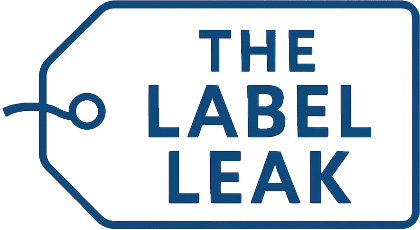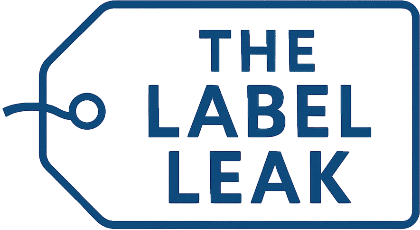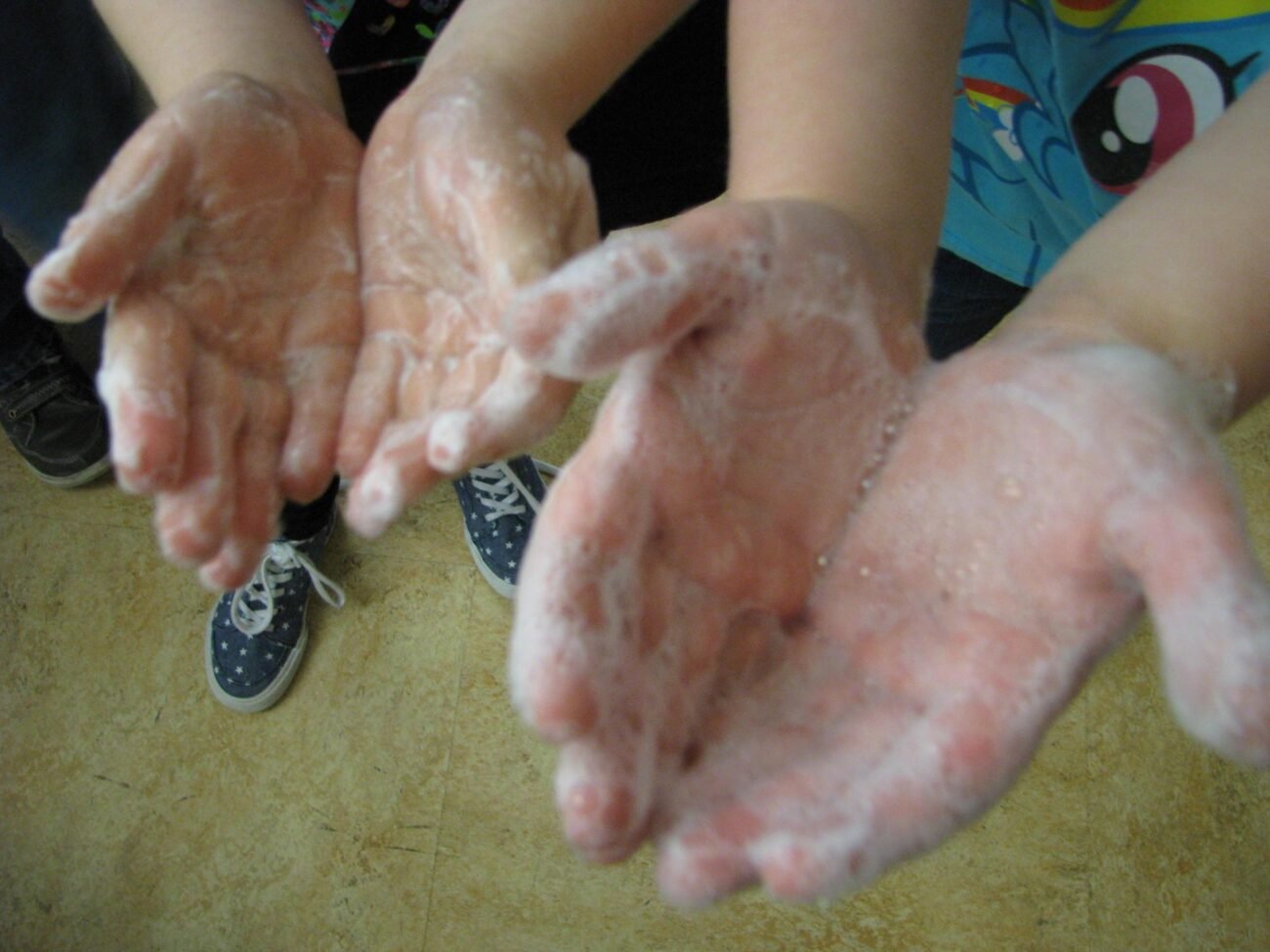Fourth grade food safety lesson plan with High Speed Hand Washing
https://extension.oregonstate.edu/sites/extd8/files/styles/full/public/images/2020-06/3-6-15-023.JPG?itok=BjABauTj
Fourth grade food safety lesson plan with High Speed Hand Washing
Our research with third- through eighth-graders over seven years shows that food safety practices may slip from year to year, but an engaging food safety activity revives and slightly increases their commitment to proper hand washing. Students who have learned High Speed Hand Washing in previous years revisit food safety with funny skits or games. Students review High Speed Hand Washing and practice it in their new classroom groups to get their class time under five minutes. Skits and games that can be adapted for most age groups are listed as Food Safety Activity Supplements.
Length of session: 30 minutes
Key messages and objectives
The nutrition educator will provide an introduction and overview of the fourth grade nutrition program, Enjoying Our Healthy Harvest series; the lesson format; expectations; and key message “Eat a variety of vegetables and fruits every day.” Educator will provide each student with an individual folder containing state map, nutrition messages chart, Kettle of Good Nutrition and other handouts for specific lessons covered.
Students/participants will learn about germs and the importance of proper hand washing before preparing and tasting food. Students will:
- Observe and identify ways germs are spread.
- Participate in a hand-washing experiment.
- Recognize at least five different situations when it is important and appropriate to wash hands to help stop germs from spreading.
- Practice how to hand wash properly to help stop germs from spreading.
- Demonstrate how a large group or class can hand wash effectively in a timely manner.
- Write the nutrition message “Eat a variety of fruit and vegetables” on their nutrition message chart.
- Discover one resource for learning the nutritional benefits of various vegetables and fruits using the FVMM wheels.
- Locate the county they live in and draw a house in their county of residence on a state map.
Materials and supplies
For Activity 1A — Sneaky Germ Skit:
- Glitter Bug lotion.
- Large black light and tub (for sink).
- Pitcher of warm water and soap (liquid preferred).
- Paper towels.
For optional Activity 1B — Win, Lose or Wash! Game:
- Two easels with large tablet paper or eight sheets Post-it style paper.
- Two or more large poster markers.
- Two sets of laminated Win, Lose or Wash! cards.
For Activity 2 — Food Safety on the Farm Skit:
- Farmer or gardening hat.
- Big colorful handkerchief.
For optional Activity 3:
- Make a Germ Puppet and Story; Make a Germ Puppet and Story writing prompt.
- High Speed Hand Washing instructions; stopwatch.
Student handouts — provide a folder that contains the following:
Parent handouts:
Youth mini-posters, English and Spanish:
Preparation
Lesson overview
Educator will provide overview of content, format and expectations of fourth grade nutrition program, Enjoying Our Healthy Harvest. The series consists of six 30–45-minute participatory lessons. Each lesson addresses the following:
- Food safety practices including hand washing and proper sanitizing of preparation station.
- What is the fruit or vegetable of the lesson?
- Where is the fruit or vegetable grown in our state?
- When is the fruit or vegetable ripe for harvesting?
- How do we select, handle and store the fruit or vegetable?
- How do we properly wash and prepare the fruit or vegetable?
- What are the nutritional benefits of the fruit or vegetable? (Focus on vitamin A, vitamin C and fiber.)
- How does the fruit or vegetable taste? Demonstrate recipe, gain a cooking skill and taste fruit or vegetable.
Each lesson, students will:
- Identify/recognize the featured fruit or vegetable specific to the lesson.
- Read and learn how to select, handle and store the specific fruit or vegetable.
- Discover and read about the nutritional benefits of the fruit or vegetable.
- Observe how to properly wash the specific fruit or vegetable.
- Write the nutrition benefits on their nutrition message chart.
- Locate the county or counties where the specific fruit or vegetable is grown commercially in their state, draw the fruit or vegetable in the correct counties.
- Identify good (≥ 10%) and excellent (20%) sources of vitamin A and vitamin C. Good and excellent sources of fiber are ≥ 2.5 grams and ≥ 5 grams.
- Practice being a food adventurer by learning a cooking skill and tasting the fruit or vegetable.
Review Food Safety and Nutrition Activity options. Choose and prepare props for one of these skits:
Before teaching session in the classroom, set up props and post callout card on board.
Lesson delivery
Introduction
Two minutes
Distribute folders to each student. Introduce title of curriculum Enjoying Our Healthy Harvest.
Ask students, “What do you think the title is about?”
Share with students that they are going to be learning about fruits and vegetables that are grown in their own state.
Overview of classes and expectations
Ten minutes
Go through each page in the folder, focusing on the expectations for each work page.
State map with counties, Ag in the Classroom materials state map
- Have students identify the county they live in and draw a house to represent where they live.
Nutrition messages chart
- Have students write the Enjoying Our Healthy Harvest key message for the series, “Eat a variety of fruits and vegetables every day,” on the top line of the nutrition message chart.
- Reiterate that they will be learning about a different fruit or vegetable during each lesson.
Kettle of Good Nutrition
- Explain that this will be used at the end of the Enjoying Our Healthy Harvest series to write a paragraph about what they have learned in their Enjoying Our Healthy Harvest lessons.
FVMM wheels
- Demonstrate how to use the FVMM wheels. Discover how to select, handle and store specific fruits and vegetables and how to find the nutritional information for different fruits and vegetables.
Food safety — six steps
Introduce food safety lesson
Two minutes
“Who can tell me why it is important to wash your hands? When is it a good time to wash your hands? How can germs make you sick?”
Share nutrition message
Two minutes
“Wash your hands before eating or preparing food.”
Point out nutrition message on call-out card. Discuss the meaning of “prepare.”
Food safety and nutrition activity
Eight minutes
Do skit in 1A or 2.
Five minutes
Practice High Speed Hand Washing using a stopwatch with a goal of five minutes or less.
Desk activity includes: Students write nutrition message (Wash your hands before eating or preparing food) on the bottom line of the nutrition message chart.
Closing
One to three minutes
Ask students, “Do you have any questions about the expectations or the lessons?”
Have students keep their folders in their desks or a special place designated by the teacher so they can use them during each lesson.
Ask students to summarize why it is important to wash our hands before we eat. Remind them to practice High Speed Hand Washing over the next week.
Optional activities
Resources
Find Ag in the Classroom materials for your state


